Samsung 840 Series 250GB SSD Review
Inside The 840 Series
Opening the drive was a bit of an adventure. Something we feared given the joyous time we had with the 830 Series drive that’s currently being held together with tape after we mangled the plastic clips. This time, the screws that stood between us and the innards of the 840 Series drive were of the special tamper resistant pentalobe type; for which we did not have the proper tool. Nor do most people for that matter and of course this is by design so geeks like us don’t poke around where we don’t belong. However, a little ingenuity, elbow grease, and a stout flat head jeweler screwdriver thankfully did the trick but I now know what to put on my wishlist to Santa. Maybe Samsung will be kind enough to include one next time.
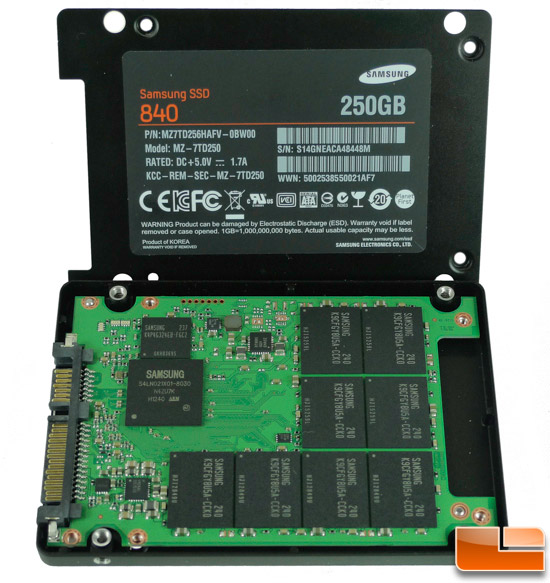
Once open, the PCB is not held in by further encumbrances (thankfully!) and doesn’t have anything in the way of thermal pads or shims.

The backside of the PCB is a bleak landscape of tracers with nary a component in sight.
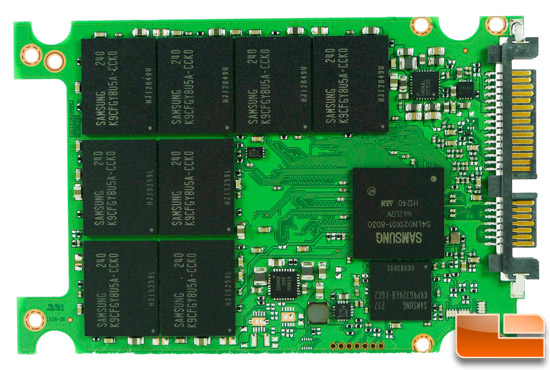
The other side is where all the good bits reside as evidenced above.
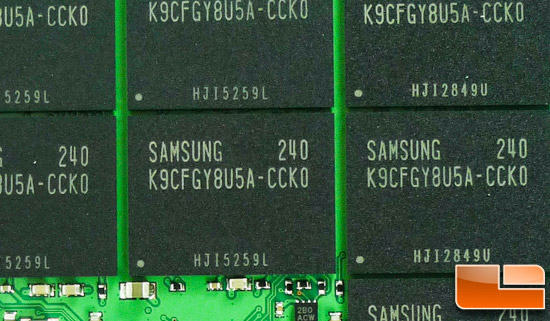
First up is the NAND and it’s a change of pace for us. You are looking at the first consumer SSD to be constructed with 21nm TLC 400Mbps toggle-mode DDR2 NAND. Most consumer drives use MLC NAND and enterprise drives, more often than not, use SLC NAND. SLC NAND only has one bit per cell, offers the best performance and longest endurance. TLC NAND triples up on the bit per cell, is slower and has the shortest lifespan with MLC NAND falling in between. On this particular drive, we have eight modules at 32GB apiece for 256GB (1GB = 1,000,000,000 bytes) total on board. The Pro model of the 840 Series carries MLC NAND as we mentioned earlier.
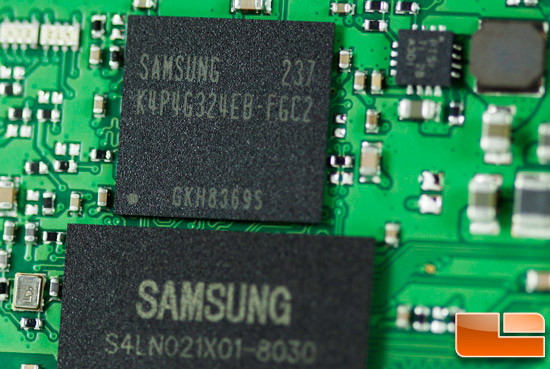
Here we see one of two DDR2 cache chips that total 512MB in capacity (half that for the 120GB drive). This assists with IO activity by buffering data which mitigates the stuttering we saw on some of the early consumer SSD models years ago. Thankfully, those days are gone.
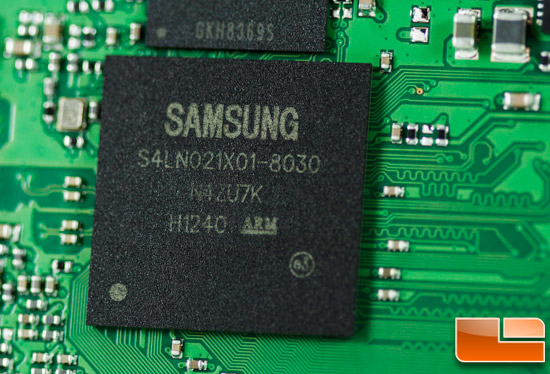
Here we see the 3-core, eight channel MDX ARM controller (300MHz) that’s found on both the regular and Pro 840 Series models and has proven to be a very capable controller. The multiple cores help in multitasking situations like we find with multi-core CPU’s, providing more consistent performance with heavy multi-operational loads. According to Samsung, the firmware is based off of the firmware found in the 830 Series and tweaked for various improvements – especially on the Pro version. As always, it supports the necessary functions of wear-leveling, error-correction, TRIM and garbage collection. It’s designed for low write amplification which is important when you are working with TLC NAND.

Comments are closed.